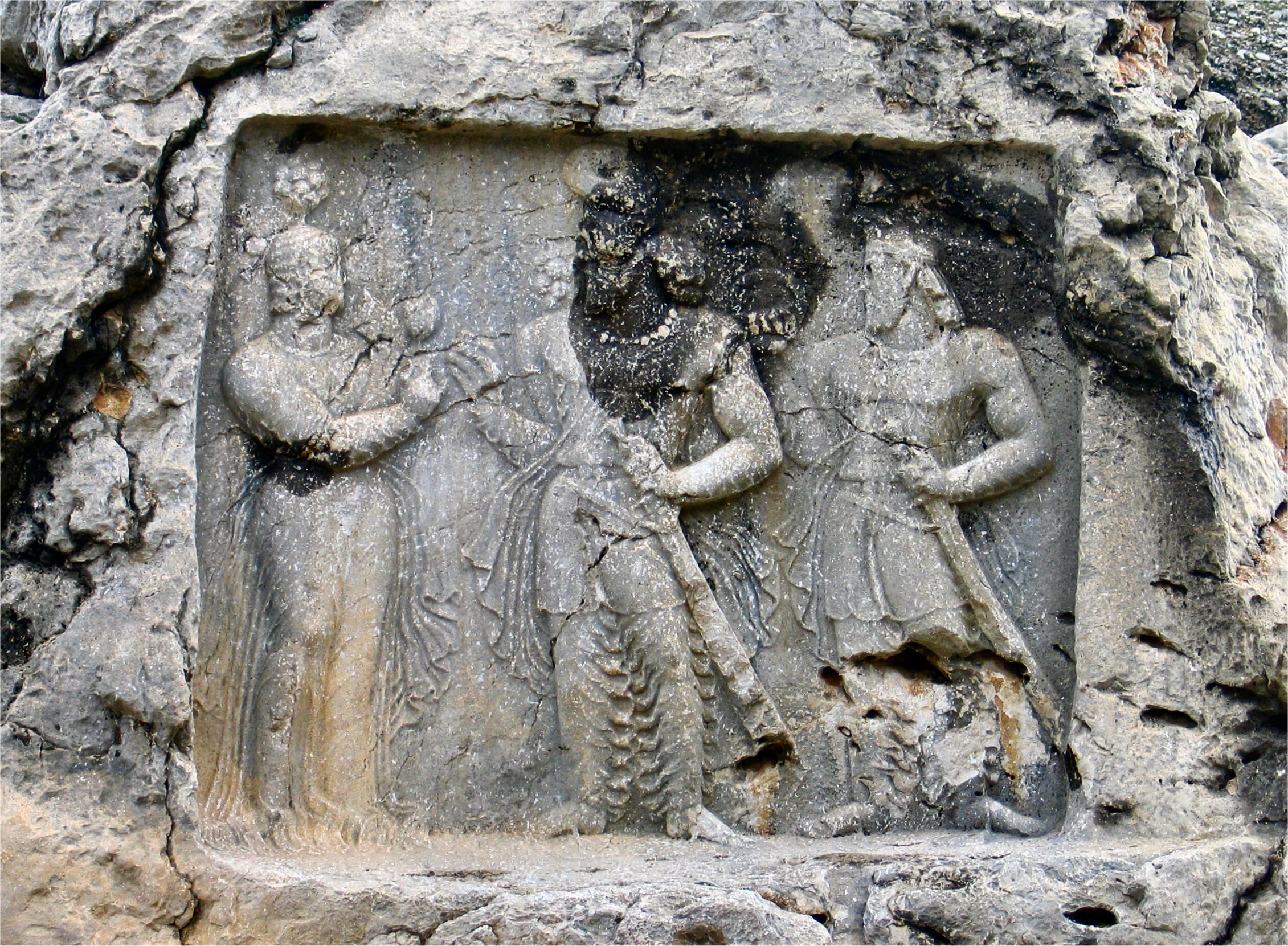Barm-e Delak on:
[Wikipedia]
[Google]
[Amazon]
Barm-e Delak ( fa, برمدلک), is a site of a
 The first relief is a family scene done in a unique style in honor to king
The first relief is a family scene done in a unique style in honor to king 
Livius.org ( accessdate=2013-08-15 ). * Georgina Hermann & Vesta S. Curti
Sasanian rock reliefs
A Review of Sassanian Images and Inscriptions
Iran Chamber Society . Archaeological sites in Iran Architecture in Iran 3rd-century works Buildings and structures in Fars Province Rock reliefs in Iran Sasanian Empire
Sasanian
The Sasanian () or Sassanid Empire, officially known as the Empire of Iranians (, ) and also referred to by historians as the Neo-Persian Empire, was the last Iranian empire before the early Muslim conquests of the 7th-8th centuries AD. Named ...
rock relief
A rock relief or rock-cut relief is a relief sculpture carved on solid or "living rock" such as a cliff, rather than a detached piece of stone. They are a category of rock art, and sometimes found as part of, or in conjunction with, ro ...
located about 10 km southeast of Shiraz
Shiraz (; fa, شیراز, Širâz ) is the List of largest cities of Iran, fifth-most-populous city of Iran and the capital of Fars province, Fars Province, which has been historically known as Pars (Sasanian province), Pars () and Persis. As o ...
, in the Pars Province of Iran
Iran, officially the Islamic Republic of Iran, and also called Persia, is a country located in Western Asia. It is bordered by Iraq and Turkey to the west, by Azerbaijan and Armenia to the northwest, by the Caspian Sea and Turkmeni ...
. The rock relief was known as Bahram-e Dundalk in Middle Persian
Middle Persian or Pahlavi, also known by its endonym Pārsīk or Pārsīg () in its later form, is a Western Middle Iranian language which became the literary language of the Sasanian Empire. For some time after the Sasanian collapse, Middle Per ...
, which means ''Bahram's heart''.
History
The site is located near a river, on the eastern side of a rocky spur. It composes four reliefs. The first relief is a family scene done in a unique style in honor to king
The first relief is a family scene done in a unique style in honor to king Bahram II
Bahram II (also spelled Wahram II or Warahran II; pal, 𐭥𐭫𐭧𐭫𐭠𐭭) was the fifth Sasanian King of Kings (''shahanshah'') of Iran, from 274 to 293. He was the son and successor of Bahram I (). Bahram II, while still in his teens, ...
. It shows the king offering a lotus flower to his wife, Shapurdukhtak.
See also
*Bahram II
Bahram II (also spelled Wahram II or Warahran II; pal, 𐭥𐭫𐭧𐭫𐭠𐭭) was the fifth Sasanian King of Kings (''shahanshah'') of Iran, from 274 to 293. He was the son and successor of Bahram I (). Bahram II, while still in his teens, ...
* Bishapour
Notes
{{ReflistReferences
* Louis Vanden BergheEncyclopædia Iranica
''Encyclopædia Iranica'' is a project whose goal is to create a comprehensive and authoritative English language encyclopedia about the history, culture, and civilization of Iranian peoples from prehistory to modern times.
Scope
The ''Encycl ...
* Bruno Overlaet, Flower and fire altar: fact and fiction on the Barm-i Dilak rock reliefs, Iranica Antiqua 45, 2010, p. 337-352.
External links
*Jona Lendering
Jona Lendering (born 29 October 1964) is a Dutch historian and the author of books on antiquity, Dutch history and modern management. He has an MA in history from Leiden University and an MA in Mediterranean culture from the Amsterdam Free Uni ...
br>Sasanian rock reliefsLivius.org ( accessdate=2013-08-15 ). * Georgina Hermann & Vesta S. Curti
Sasanian rock reliefs
Encyclopædia Iranica
''Encyclopædia Iranica'' is a project whose goal is to create a comprehensive and authoritative English language encyclopedia about the history, culture, and civilization of Iranian peoples from prehistory to modern times.
Scope
The ''Encycl ...
* Asghar MahmoudabadiA Review of Sassanian Images and Inscriptions
Iran Chamber Society . Archaeological sites in Iran Architecture in Iran 3rd-century works Buildings and structures in Fars Province Rock reliefs in Iran Sasanian Empire